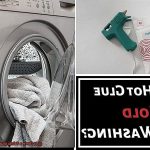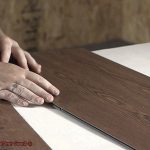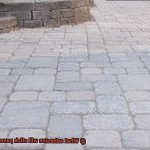Welcome to our blog post on the elusive art of removing glued PVC pipes.
We’ve all been there – that moment of despair when you desperately need to separate a PVC pipe connection, only to discover it’s stuck together with the strength of Hercules. But fret not.
With a little know-how and a sprinkle of patience, you can conquer this seemingly impossible task. In this guide, we’ll unveil some nifty tips and tricks that will help you triumph over glued PVC pipes.

So roll up those sleeves and prepare to unravel the secrets of undoing glued PVC pipes, without leaving any scars or regrets behind.
What is Glued PVC Pipe?
Contents
- 1 What is Glued PVC Pipe?
- 2 Heat Method for Removing Glued PVC Pipe
- 3 Solvent Method for Removing Glued PVC Pipe
- 4 Cutting Method for Removing Glued PVC Pipe
- 5 Safety Precautions When Removing Glued PVC Pipe
- 6 Challenges with Removing Glued PVC Pipe
- 7 Advantages of Replacing the Entire Section of Pipe Rather than Attempting to Remove and Salvage the Existing Pipe
- 8 Conclusion
Glued PVC pipe is a versatile and durable material commonly used in plumbing and construction projects. Joined together using PVC glue or solvent cement, this piping system offers numerous benefits, including resistance to corrosion and a strong, watertight seal. In this blog post, we will explore the various uses of glued PVC pipe, the process of gluing it, and the challenges associated with its removal.
Uses of Glued PVC Pipe:
- Plumbing Systems: Glued PVC pipe is a popular choice for water supply lines, drainage systems, and sewer lines in residential and commercial plumbing.
- Irrigation Systems: It is widely used in agricultural and landscaping irrigation systems.
- Ventilation Systems: Glued PVC pipe is utilized in ventilation systems to transport air and remove pollutants from enclosed spaces.
- Electrical Conduits: Its non-conductive properties make it ideal for protecting electrical wires and cables.
The Process of Gluing PVC Pipe:
- Surface Preparation: Clean, dry, and dirt-free surfaces are essential for a strong bond.
- Application of PVC Glue: Apply an even layer of PVC glue to both the pipe and fitting, ensuring complete coverage.
- Joining the Pipes: Quickly push the pipe and fitting together while twisting slightly to distribute the glue evenly.
- Excess Glue Removal: Wipe away any surplus glue using a clean cloth or rag.
- Curing Time: Allow the joint to cure for the specified period mentioned by the manufacturer before applying pressure or using the pipe.
Removing Glued PVC Pipe:
- Heat Method: Soften the adhesive by applying heat with a heat gun or blow dryer, facilitating separation of the pipes.
- Solvent Method: Use a solvent designed to dissolve PVC glue, breaking down the adhesive bond for easier removal.
- Cutting Method: Carefully cut through the pipe near the joint using a PVC pipe cutter or hacksaw, removing the desired section without disrupting the glued joint.

Heat Method for Removing Glued PVC Pipe
If you’ve found yourself stuck with glued PVC pipes, fear not. The heat method is here to save the day. Let’s dive into this magical technique that will make those stubborn pipes surrender.
First things first, when is the heat method your best bet? Well, when cutting or using solvents just won’t cut it, heat is the answer. It works wonders for both small and large diameter PVC pipes, making it a versatile solution to your plumbing woes.
To unleash the power of heat, grab a trusty tool known as a heat gun. This little gem shoots out a concentrated stream of hot air that will soften the adhesive holding your pipes together. But hold your horses. Before you go all “fire-breathing dragon” on those pipes, ensure you protect the surrounding area to avoid any collateral damage.
With everything set up, it’s time to get down to business. Apply heat evenly to the entire circumference of the pipe joint. As the adhesive starts to melt away, twist and pull the pipe apart. Remember, though: safety first. Wear protective gloves because nobody wants burned fingers in their DIY adventures.
Once you’ve successfully removed the glued PVC pipe, you might still have some residue left behind. No worries. Simply treat your pipes to a spa day using solvents or abrasive materials to clean up any remnants of the adhesive.
Solvent Method for Removing Glued PVC Pipe
It’s like trying to untangle a Gordian knot. But fret not, my friend, for there exists a solution – the solvent method. Prepare to become a DIY hero as we guide you through the steps of using solvents to effortlessly remove glued PVC pipes.
Step 1: Prepare for Battle
Before commencing your plumbing conquest, ensure that you turn off the water supply and drain any lingering water from the pipes. Safety always comes first.
Step 2: Meet Your Secret Weapon – The Solvent
Our secret weapon is none other than a specialized PVC pipe solvent or primer, armed with the potent chemical known as methyl ethyl ketone (MEK). This mighty solvent possesses the power to dissolve the bond created by PVC glue, making your life infinitely easier.
Step 3: Apply Liberally
With brush or applicator in hand, douse the joint where the PVC pipe is glued with generous amounts of solvent. Leave no glue untouched; coat every crevice with this magical elixir.
Step 4: Patience is Key
Now, take a deep breath and allow the solvent time to weave its enchantment. A few minutes will suffice to penetrate and loosen the stubborn union. Use this moment to perfect your victory dance – trust us, it’ll come in handy.
Step 5: Twist and Pull
Once the solvent has sufficiently weakened the bond, grasp your trusty pipe wrench or pliers and begin twisting and tugging at the glued joint. It may require some elbow grease, but fear not – armed with the solvent’s power, those pipes will yield eventually.
Safety Tips:
Remember, safety should forever remain your ally. When handling solvents containing MEK, don gloves and goggles for protection. Ensure you work in a well-ventilated area, heeding the manufacturer’s instructions for proper usage and safety precautions.
Cutting Method for Removing Glued PVC Pipe
Well, fear not. In this article, we’ll uncover the secrets of the cutting method, the go-to solution for conquering those stubborn bonds. So, grab your safety gear and let’s dive into the world of PVC pipe removal.
Tools and Safety Measures:
Before embarking on your PVC pipe liberation journey, it’s crucial to prioritize safety. Ensure you have gloves and goggles to protect yourself from potential hazards. Now, let’s introduce the star players in this endeavor:
- Hacksaw: This trusty handheld tool with its fine-toothed blade is perfect for cutting through PVC pipes manually. While it may take a bit longer, it gets the job done.
- Reciprocating Saw: Enter the Sawzall. This powerful tool with its rapid back-and-forth motion makes cutting through PVC pipes a breeze.
- PVC Pipe Cutter: The ultimate specialist in PVC pipe cutting, this tool features a ratcheting mechanism for precise and clean cuts.
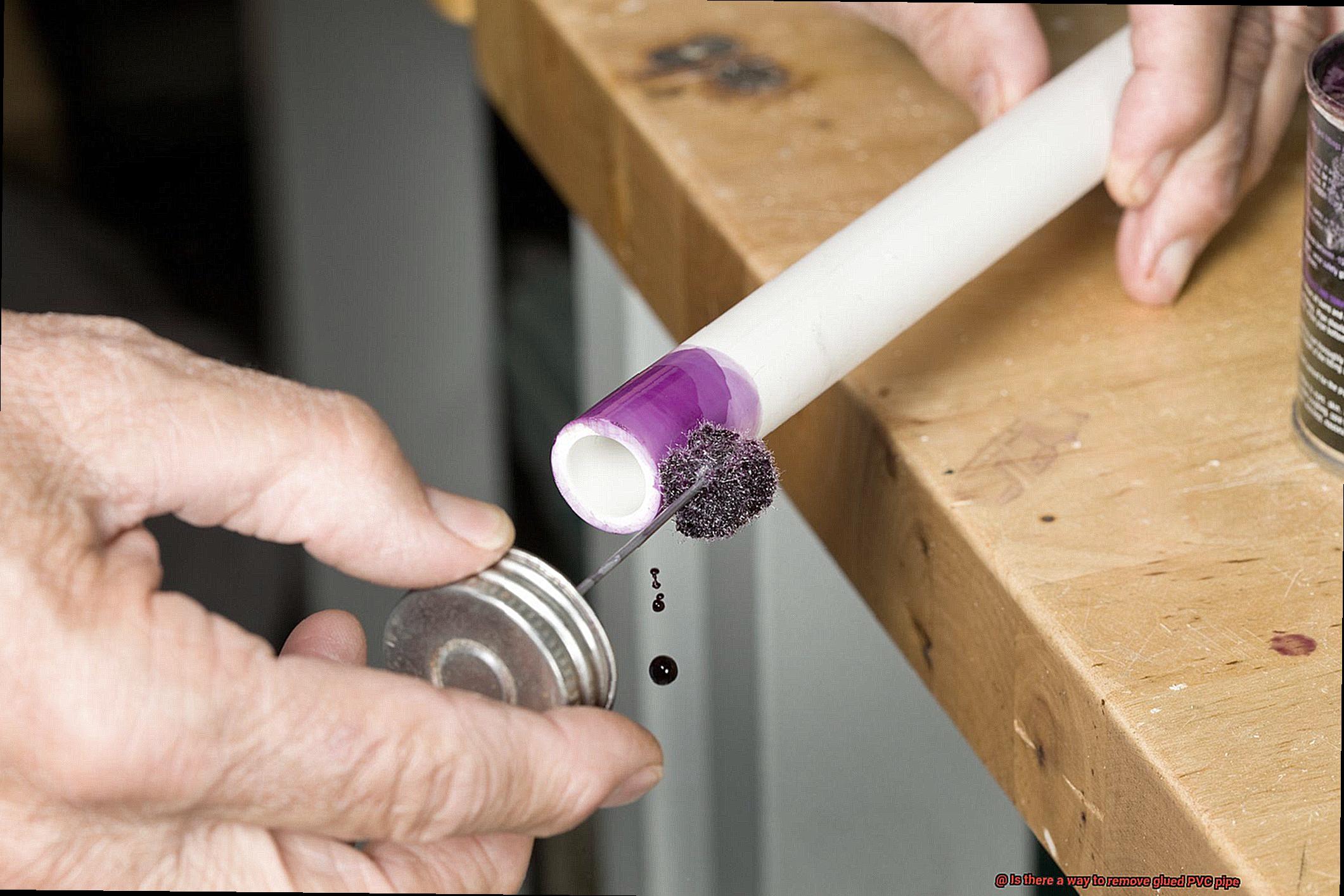
The Cutting Process:
- Mark the Cutting Point: Use a pencil or marker to clearly mark the desired cutting point on the PVC pipe.
- Secure the Pipe: Prevent unwanted movement during cutting by securing the PVC pipe firmly using clamps or a vise.
- Guide and Protect: To prevent damage to surrounding materials or fixtures, use a piece of scrap wood or cardboard as a guide while cutting.
- Start Cutting: With your chosen tool in hand, begin cutting through the glued joint. For strong bonds, multiple passes may be necessary.
- Twist and Pull: After successfully cutting through the glue bond, twist or pull apart the remaining sections of the PVC pipe for easy removal.
Removing glued PVC pipes may seem like a formidable challenge, but armed with the right tools and techniques, you can conquer any bond. Remember to prioritize safety, choose the appropriate cutting tool for your needs, and follow the step-by-step process outlined in this article. So go forth, DIY heroes, and free those pipes from their adhesive shackles.
Safety Precautions When Removing Glued PVC Pipe
Removing glued PVC pipe requires careful attention to safety precautions to ensure a smooth and accident-free process. This article outlines crucial safety measures to follow when removing glued PVC pipe, including the use of personal protective equipment (PPE), proper ventilation, cautious handling of cutting tools, secure clamping of the pipe, responsible use of chemical solvents and heat application, maintaining a clean work area, and environmentally friendly disposal of the PVC pipe.
Personal Protective Equipment (PPE):
Before beginning work on removing glued PVC pipe, it is vital to wear appropriate PPE. Safety goggles protect your eyes from debris or chemical splashes, gloves shield your hands from sharp edges or chemicals, and a dust mask prevents inhalation of harmful fumes or particles.
Ventilation:
Work in a well-ventilated area or use a fan for proper air circulation. This minimizes the inhalation of fumes that may be released during the removal process.
Cutting Tools:
Exercise caution when using cutting tools such as a hacksaw or reciprocating saw. Ensure sharp blades are in good condition to minimize accidents. Always cut away from yourself and keep your hands clear of the cutting area.
Secure Clamping:
Before attempting to remove the glued PVC pipe, securely clamp it using vise grips or pipe clamps to prevent unexpected movement or dislodging.
Responsible Use of Chemical Solvents:
If necessary, use chemical solvents to loosen the bond between glued PVC joints. Read and follow manufacturer instructions carefully when using solvents. Avoid direct contact with skin and eyes, and work in a well-ventilated area.
Cautious Heat Application:
Applying heat with a heat gun or propane torch can aid in removing glued PVC pipe. However, use extreme caution as heat may cause burns or start a fire. Keep a fire extinguisher nearby and ensure no flammable materials are present.
Clean Work Area:
Maintain a clean work area, free from obstructions or clutter. This minimizes the risk of tripping or falling, especially when using cutting tools or working with solvents.
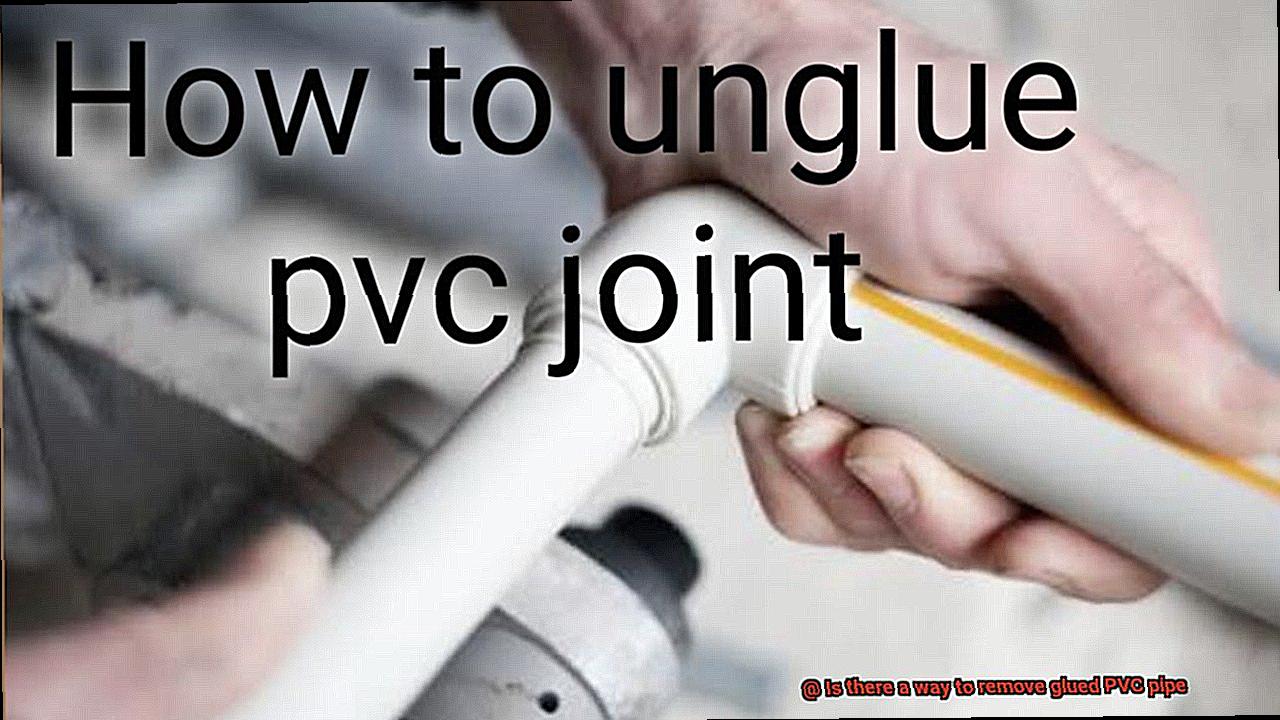
Environmentally Friendly Disposal:
After successfully removing the glued PVC pipe, dispose of it responsibly. Check local regulations for environmentally friendly disposal methods.
Challenges with Removing Glued PVC Pipe
Tackling the Sticky Situation: Challenges with Removing Glued PVC Pipe
Introduction:
We’ve all found ourselves in the daunting task of removing glued PVC pipe, only to be met with a sticky situation. But fear not. In this article, we’ll delve into the challenges associated with removing glued PVC pipe, equipping you with insights and tips to conquer this task like a pro.
The Unyielding Bond:
The strength of the bond created by PVC adhesive is one of the primary challenges you’ll face. This adhesive is specially formulated to forge an unbreakable connection between PVC pipes and fittings, leaving you scratching your head in frustration.
The Relentless Rigidity:
Once the adhesive sets, it transforms into a rigid and unforgiving substance. Even if you manage to loosen the joint, there’s a looming risk of causing cracks or breaks in the pipe during removal. It’s like trying to bend steel – an arduous feat indeed.
The Battle of Adhesive Types:
The type of adhesive used also plays a significant role in the difficulty of removing glued PVC pipe. Solvent-based adhesives form a stronger bond than their water-based counterparts, intensifying the challenge at hand. So, when preparing for this undertaking, take note of the adhesive type used.
Location Matters:
Sometimes, it’s not just about the glue but also where it’s applied. When dealing with a glued joint tucked away in a confined space or an area that’s hard to access, you’ll encounter an additional hurdle. But fret not. With patience and ingenuity, those hard-to-reach spots can still be conquered.
Advantages of Replacing the Entire Section of Pipe Rather than Attempting to Remove and Salvage the Existing Pipe
When it comes to plumbing repairs, salvaging an existing pipe that has been glued or welded in place can be a daunting and time-consuming task. However, replacing the entire section of pipe offers numerous advantages that make it the ultimate solution. From efficiency and durability to the opportunity for upgrades and improvements, opting for a complete replacement streamlines the process and ensures a reliable plumbing system.
Efficiency:
Removing and salvaging glued or welded pipes is labor-intensive and time-consuming. By choosing to replace the entire section of pipe, you save time and money by simplifying the installation process. Instead of struggling with stubborn old pipes, you can easily remove the entire section and replace it with fresh materials, saving you valuable time and labor costs.
Durability:
Attempting to salvage an existing pipe poses a risk of damage during removal, leading to potential leaks or other future problems. The advantage of replacing the entire section of pipe lies in starting fresh with new materials designed to withstand the test of time. Say goodbye to worries about leaks or failures and embrace a durable plumbing system that will stand strong for years.
Upgrades and Improvements:
Sometimes a simple replacement isn’t enough – you want to make upgrades or improvements to your plumbing system. Opting for a complete replacement allows you the flexibility to do just that. If you’re facing frequent clogs or backups, upgrading to a larger diameter pipe can help alleviate these issues. Want better water flow or pressure? Choose a more efficient pipe material. With a complete replacement, you have the opportunity to optimize your plumbing system’s performance.
Minimizes Future Repairs:
While salvaging an existing pipe may save initial costs, it could lead to future repairs and maintenance. Old pipes that have been glued or welded together may be more prone to leaks or failures in the long run. By replacing the entire section of pipe, you eliminate these potential issues, saving you money on future repairs and emergency fixes.
Safety Considerations:
Safety should always be a priority. Depending on the type of pipe and the materials it carries, attempting to remove and salvage it could pose a risk to your health and safety. By replacing the entire section of pipe, you ensure that any potential hazards are eliminated, providing peace of mind that your plumbing system is safe for use.
LyQww5f8EWA” >
Also Read: How To Remove Glue On Carpet?
Conclusion
In conclusion, don’t be intimidated by the seemingly unbreakable bond of glued PVC pipe. With the right tools and techniques, you can triumph over this challenge. Whether you opt for the heat method, solvent method, or cutting method, there are solutions available to liberate those stubborn pipes.
The heat method is a versatile choice that works wonders on both small and large diameter PVC pipes. By wielding a heat gun to soften the adhesive, you can twist and yank the pipes apart. Just remember to shield the surrounding area and don protective gloves for safety’s sake.
For those who prefer a chemical approach, the solvent method is your go-to move. Utilize a specialized PVC pipe solvent or primer to dissolve the glue’s stronghold. Generously apply the solvent to the joint and allow it time to work its magic. Then, with a twist and pull, witness as those once inseparable pipes separate before your very eyes.
And if all else fails, fear not. The cutting method remains an ever-reliable option. Armed with tools like a hacksaw, reciprocating saw, or PVC pipe cutter, cautiously slice through the pipe near the joint and extract your desired section without disrupting that stubbornly glued connection.
As always, prioritize safety above all else when attempting these methods. Equip yourself with personal protective equipment (PPE), operate in a well-ventilated workspace, securely clamp the pipe in place, handle cutting tools with care, responsibly use solvents, maintain cleanliness throughout your work area, and dispose of PVC pipe properly.
By heeding these tips and employing these techniques with confidence and determination, you will emerge victorious in removing glued PVC pipe.


